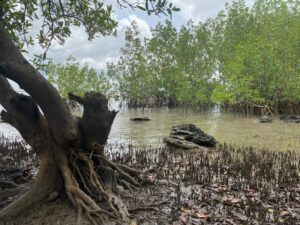Séminaire
Weathering everywhere? Exploring water pathways from a very steep mountain catchment to upland hills
John Armitage, IFP Energies nouvelles
Séminaire de l’UMR METIS-IPSL.
Description
Climate change will lead to a change in rainfall intensity and quantity in both extreme environments and the more mundane, with consequences for flooding and landscape erosion. Rainfall leads to run-off, which transports sediments, rocks, trees, and debris as the intensity of the run-off increases. A geomorphologist, or someone like me, might assume that surface run-off is the key processes required to understand the risk of erosion and transport of debris. Yet rainfall infiltrates into the subsurface, and the pathway from precipitation to stream flow is potentially via the subsurface and not via run-off, even in very steep mountainous topography.
In this presentation, I will explore two landscapes (1) the Himalayan catchment, Kahule Khola, with a relief of more than 2000 m, and (2) the gentler landscape of the Ahr valley in Germany, with a relief closer to 200 m. With combined field observations and numerical modelling, I will show that in steep topography there is consistent evidence for a ~20 m thick weathering zone, and water pathways are through this zone, even during peak monsoon. The project in the Ahr valley only recently began, however preliminary results would suggest that here, even in periods of high rainfall, water pathways are likewise via the subsurface. Sediments and debris are therefore sourced from the stream banks, and not the hill slope. In general, our results suggest that weathering is a ubiquitous feature of the Earth’s surface, and that groundwater and not surface routing is key to understanding how landscape erodes.
John Armitage, IFP Energies nouvelles.
Informations supplémentaires
Lieu
Laboratoire METIS, Sorbonne Université, Campus Pierre et Marie Curie
4, place Jussieu 75005 Paris
Salle Ghislain de Marsily (ex salle Darcy), tour 46-56, 3e étage.






